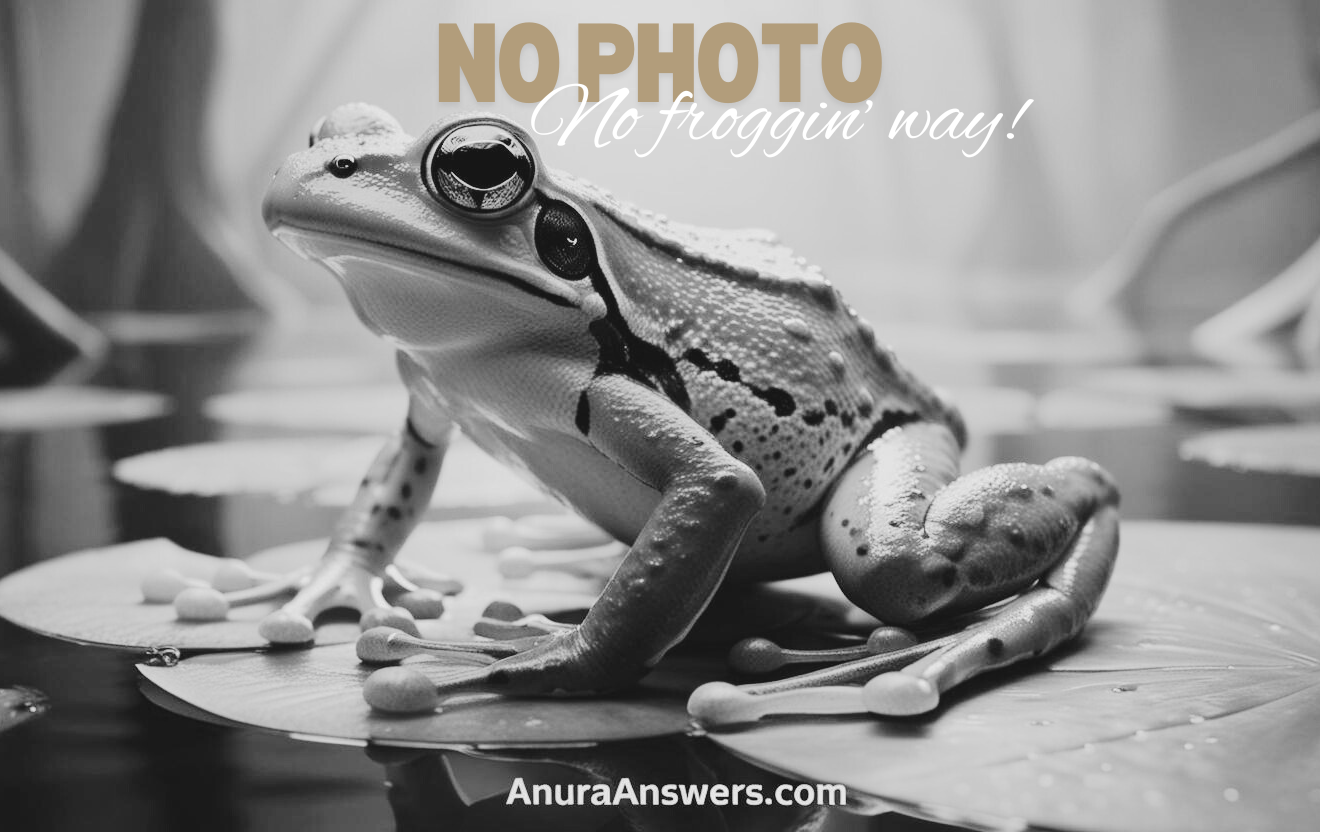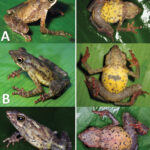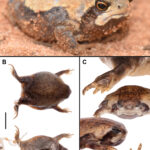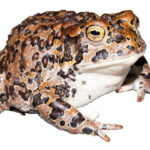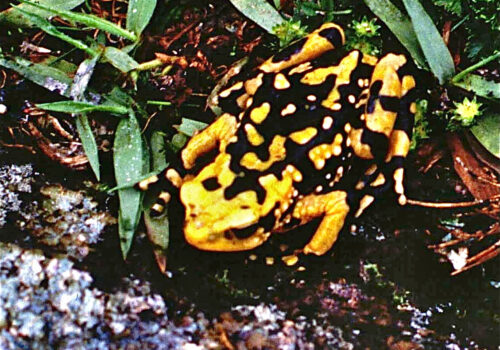- Introduction: A Frog Like No Other
- Taxonomy and Classification
- Natural Habitat: Realm of the Mountain Mists
- Physical Characteristics: Nature's Exquisite Brushwork
- Behavior and Life Cycle: Harmonizing with Stream and Forest
- Ecological Role: An Essential Link in the Web of Life
- Threats and Conservation Status: On the Brink of Silence
- Cultural and Scientific Significance: A Symbol of Biodiversity
- Conclusion: Hope for Atelopus pinangoi and Future Generations
Introduction: A Frog Like No Other#
Deep beneath a lush canopy, where sunlight barely dapples damp yet vibrant leaf litter, a brilliantly colored amphibian leaps silently through the moisture-rich air. Meet the Atelopus pinangoi, a truly exceptional species of harlequin toad, native exclusively to the cloud forests and montane ecosystems of northern Venezuela. With its vivid coloration resembling an artist’s palette—striking combinations of yellows, browns, and greens harmony—Atelopus pinangoi has captured not only the eye but also the hearts of scientists, conservationists, and locals alike.
Yet, while its beauty may suggest an animal thriving comfortably in nature’s abundance, regrettably, Atelopus pinangoi is increasingly rare, pushed to the brink by habitat degradation, disease, and climate change. In its brilliant hues and delicate form lies a species emblematic of biodiversity’s delicate balance. Journey alongside us through the mist-laden forests and glittering streams of Venezuela as we uncover the hidden world of Atelopus pinangoi.
Taxonomy and Classification#
To understand Atelopus pinangoi, we first delve into its scientific legacy. Described formally by biologists Rivero and Serna in 1983, this amphibian belongs to the Bufonidae family, rich with diverse and globally widespread true toads. Within this family, Atelopus pinangoi rests securely in the genus Atelopus, commonly known as harlequin toads or stubfoot toads due to their brightly colored skins and reduced digits.
Harlequin toads are renowned for their unique appearance and specialized adaptations. More closely related to species such as Atelopus cruciger, Atelopus hoogmoedi, and Atelopus zeteki, our protagonist shares distinct traits like vibrant pigmentation, slender bodies, and a delicate yet agile build that separates them from the stereotypical robust toad images familiar to many.
Natural Habitat: Realm of the Mountain Mists#
Atelopus pinangoi holds a very particular affinity for habitats shrouded in perpetual moisture and tranquility. Endemic to Venezuela, particularly the cloud forests and montane zones of Mérida and Táchira states, this species thrives amongst high-altitude forest floors and pristine mountain streams that cut through the heart of the Andes.
The landscape here tells tales of timeless beauty: moisture-laden air enveloping the trees in mist, thick carpets of moss blanketing old tree trunks, and glittering streams that meander gracefully over smooth stones. These forests resonate daily with the dripping melody of rainwater, combining with the whispers of leaves shaken gently by mountain breezes.
Such environments, rich in humidity and sheltered from drastic temperature variations, are not mere scenic backdrops but vital resources for Atelopus pinangoi, whose sensitive skin requires moist microclimates. Within this niche, the frog navigates territories with astonishing precision, drawn closely to clear, cold waterways fulfilling both hydration and breeding needs.
Physical Characteristics: Nature’s Exquisite Brushwork#
Atelopus pinangoi is profoundly striking, an animal that nature painted with extraordinary enthusiasm. Most individuals are relatively small, typically measuring around two to four centimeters in length, with a slender posture and limbs evolved specifically for agile leaps and delicate movements through their lush montane environment.
The skin, smooth and moist, showcases dazzling patterns—a mosaic thriving with hues from lemon-yellow and deep emerald to umber brown. Each individual harbors a unique pattern, allowing researchers to identify them, much like fingerprint recognition in humans.
Adaptations enhancing survival don’t end with its colors; these vibrant patterns signal toxicity, serving as an essential warning device. Predators quickly learn to associate these bold colors as cautionary signals—eating these frogs can result in discomfort or even illness, sparing Atelopus pinangoi from becoming an easy meal despite its diminutive size.
Behavior and Life Cycle: Harmonizing with Stream and Forest#
Feeding and Daily Routine#
Within its verdant sanctuary, Atelopus pinangoi exhibits intriguing behaviors shaped intricately by its habitat. Primarily diurnal, this species busily moves across the forest floor, consuming a buffet of small insects, arachnids, and other tiny invertebrates. Their hunting strategy employs stealth and patience, striking swiftly at unwary prey that wanders too closely.
Mating Rituals and Reproduction#
Perhaps the most fascinating aspect of this species is its breeding ecology. Male Atelopus pinangoi congregate around clear, flowing mountain streams emitting soft yet persistent calls to attract receptive females. This gentle chorus, subtle yet mesmerizing, resonating amidst rushing water and leaf rustles—constitutes a harmony heard clearly by attentive ears.
Upon pairing, the females carefully deposit ribbon-like strands of gelatinous egg clusters onto submerged rocks or vegetation within pristine streams. These eggs then give rise to tadpoles, streamlined and perfectly adapted for life in swift currents. Unlike frogs adapted to stagnant ponds, harlequin tadpoles are masters of thriving amidst moving waters, gripping rocks efficiently using specialized mouthparts, ensuring their survival to adulthood is nothing short of remarkable.
Ecological Role: An Essential Link in the Web of Life#
Atelopus pinangoi plays critical roles within its ecosystem as both predator and prey. As voracious insect predators, these frogs help naturally regulate insect populations, contributing to the delicate ecological balance necessary for thriving forest health and resilience.
Conversely, despite their toxins, they are preyed upon occasionally by specialized predators, providing sustenance within well-adapted food webs. Potential predators facilitated by evolutionary tolerances may include certain birds, snakes, or mammalian predators adapted to withstand mildly toxic amphibians.
Furthermore, amphibians like Atelopus pinangoi serve as sensitive bioindicators, alerting ecologists to subtle environmental shifts such as deteriorating water quality, habitat disturbance, or climate anomalies. The abundance or decline of this species thus stands as a sentinel indicator of ecosystem health in Venezuelan cloud forests.
Threats and Conservation Status: On the Brink of Silence#
Unfortunately, Atelopus pinangoi exemplifies the fragile position amphibians currently occupy worldwide. According to the International Union for Conservation of Nature (IUCN) Red List, Atelopus pinangoi is officially classified as Critically Endangered. Primary threats faced include habitat destruction caused by agriculture, deforestation, and human settlements encroaching upon mountain ecosystems.
The devastating spread of chytridiomycosis, a fungal disease caused by Batrachochytrium dendrobatidis (Bd), has substantially accelerated its decline. Amphibian populations worldwide struggle to resist this pathogen; vulnerable harlequin toads, sensitive to environmental stress, have seen precipitous declines.
Climate change poses additional long-term threats, disrupting delicate moisture regimes and temperature patterns essential to frog survival. Extremes in drought-wet cycles potentially increase disease susceptibility, further threatening this species’ already shrinking population.
Cultural and Scientific Significance: A Symbol of Biodiversity#
For local communities, Atelopus pinangoi symbolizes the rich biodiversity that resides within Venezuelan cloud forests. The vivid appearance and delicate presence make it a powerful emblem, advocating forest conservation and raising awareness of environmental issues among communities and policymakers.
Scientifically, Atelopus pinangoi provides valuable insight into evolutionary biology, bioindicator potential, and climate change research. Studies on toxins used by harlequin frogs have opened new medicinal and biochemical pathways, impacting medical research in unexpected and beneficial ways.
Conclusion: Hope for Atelopus pinangoi and Future Generations#
Amid present challenges lies opportunity and hope. Atelopus pinangoi serves as a beautiful ambassador for vulnerable ecosystems, reminding humanity of its intrinsic ties to nature’s delicate balance. Conservation strategies such as habitat protection, captive breeding programs, environmentally sensitive land-use planning, and dedicated research into disease management offer genuine hope for this extraordinary species.
We stand as both admirers of and advocates for Atelopus pinangoi, entrusted with its protection and preservation. Each step we take to educate, promote awareness, and support conservation solidifies our commitment to safeguarding nature’s precious tapestry for generations to come. Let the striking colors and haunting choruses of Venezuela’s cloud forests not fall silent, but flourish vibrantly as testaments to conservation’s power and resolve.
